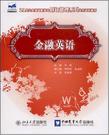金融英语
出版时间:2008-8 出版社:中国农业大学出版社 作者:刘娣 主编 页数:227
前言
随着我国改革开放的持续深化,社会主义市场经济对高等职业技能型人才的需求迅猛增加。2002年,随着《国务院关于大力推进职业教育改革与发展的决定》(国发[2002]16号)的颁布,揭开了我国高等职业教育发展的新篇章。为贯彻落实《国务院关于大力发展职业教育的决定》,“十一五”期间,教育部、财政部决定实施国家示范性高等职业院校建设计划,通过重点建设100所国家示范性高职院校,带动全国高职院校深化改革,提升高等职业教育的整体水平。国家启动示范性高等职业院校建设计划,标志着我国高等职业教育进入了一个追求内涵发展的新的历史阶段,这是科学发展观在我国高等教育领域的具体体现,对促进我国高等职业教育更好更快地发展具有巨大的战略意义。 财经管理类专业是我国高职高专教育极其重要的组成部分。2005年,全国高职高专院校在校生427万,其中财经管理类专业在校生超过80万,占18.8%。高职高专财经管理类专业主要着眼于培养社会主义市场经济发展所需要的德、智、体全面发展的高素质专门人才,要求具有较强的职业技能和较好的创新精神以及实践能力。 在当前开拓新型工业化道路,推进全面小康社会建设的新时期,进一步加强经济管理人才的培养,注重经济理论的系统化学习,特别是现代经济管理理论的学习,提高学生的专业理论素质和应用实践能力,培养出一大批高水平、高素质的经济管理人才,越来越成为提升我国经济竞争力、保证国民经济持续健康发展的重要前提。这就要求高职高专财经管理类职业教育要更加注重依据国内外社会经济条件的变化适时变革和调整教育目标和教学内容;要求财经管理学科专业更加注重应用、注重实践、注重规范、注重国际交流;要求财经管理学科专业与其他学科专业相互交融与协调发展;要求财经管理类职业教育培养的人才具有更加丰富的社会知识和较强的人文素质及创新精神。要完成上述任务,高职高专院校需要进行深入的教学改革和创新。特别是要搞好有较高质量的教材的编写和创新。 出版社的领导和编辑通过对国内高职高专院校财经管理学科教材使用情况的调研,在与各院校的专家学者讨论的基础上,决定组织编写和出版《21世纪全国高职高专财经管理系列实用规划教材》,这是一项有利于促进高职高专院校教学改革发展的重要措施。
内容概要
本书由18个单元组成,内容涉及货币体系、金融市场和融资方式、国际结算、会计和金融信函等方面。每个单元由学习目标、课文、词汇表、注释和习题5个部分组成,注释详尽,生词量及习题难度适中。 本书内容新颖实用,适合大专院校经济、财政、金融、贸易等专业的学生使用,也可作为金融行业从业人员提高英语水平的培训教材。
书籍目录
Unit 1 MoneyUnit 2 International Monetary SystemUnit 3 Money MarketUnit 4 Investment and Its RiskUnit 5 Foreign Exchange ManagementUnit 6 LoansUnit 7 LeasingUnit 8 Balance of PaymentsUnit 9 FinanciaI InstrumentsUnit 10 CollectionUnit 11 Letter of Credit(1)Unit 12 Letter of Credit(II)Unit 13 BondsUnit 14 Factoring and ForfeitingUnit 15 Accounting(I)Unit 16 Accounting(II)Unit 17 InsuranceUnit 18 Bank LettemKey to Exercises参考文献
章节摘录
2.Lire Insurance Process Flow The simplest life insurance business cycle looks like this: (1)The client approaches the insurer through an agent with a proposal containing his/her personal details,income details,medical history,products(the product describes the features provided by the insurer like maturity bonus,claims allowed,etc..These features vary from product to product),sum assured(the amount for which the client is covered),term(number of years for which the client is to be covered)and premium amount(installment amount to be paid by the client to the insurer).The agent who brings this proposal is termed as a base/servicing agent for the proposal. (2)The proposal will go through various stages of approval and risk evaluation by the "Central Processing Centre"of the Insurance Company.Upon final approval,a legal agreement, termed as policy,between the insurer and the client is prepared whereby the insurer covers the client for the sum assured.The client is also entitled for some additional benefits,if any,depending on the features of the product taken in the policy.The base agent gets a commission for the policy. (3)The client pays premium at regular intervals.These subsequent premiums are termed as renewal premiums.The base agent gets a commission on the renewal premium too. (4)The client may come back with some alterations to the policy viz.increase/decrease in sum assured,increase/decrease of the term of policy,etc..The insurer will make the relevant changes to the policy and will issue endorsements stating the made alterations and their effect on the policy. (5)During the term of the policy,the client can submit claims.The insurer makes payment against the claim after verification.Depending on the type of claim,the policy is either terminated or kept in force. (6)At the end of the term of the policy,the client gets the Sum assured as part of the maturity benefit under life insurance policies.In addition to this,the client will get the maturity bonus and any other benefits depending on the product feature.
编辑推荐
针对性强,切台职业教育目标,重点培养职、韭能力,侧重技能传授。 科学实用:面向应用型人才的就业,具备大量当前实用案例分析研究,注重培养学生的实践能力。 内容新颖:借鉴国内外最新的教材,融会当前最新的理论,遵循最新发布的各项准则、规范。 系列完整:把握财经管理专业相关学科、课程之间的关系,整个系列体系严密完整。 方便教学:网上提供完备的电子教案、习题参考答案等教学资源,适合教学需要。
图书封面
评论、评分、阅读与下载
用户评论 (总计1条)
- 这本书以前借了一本,后来急着还也没时间看。
不过内容很不错就是了。
估计这书也出了很久了
拿到书时一股岁月的气味和痕迹。
不过总体还是好的
